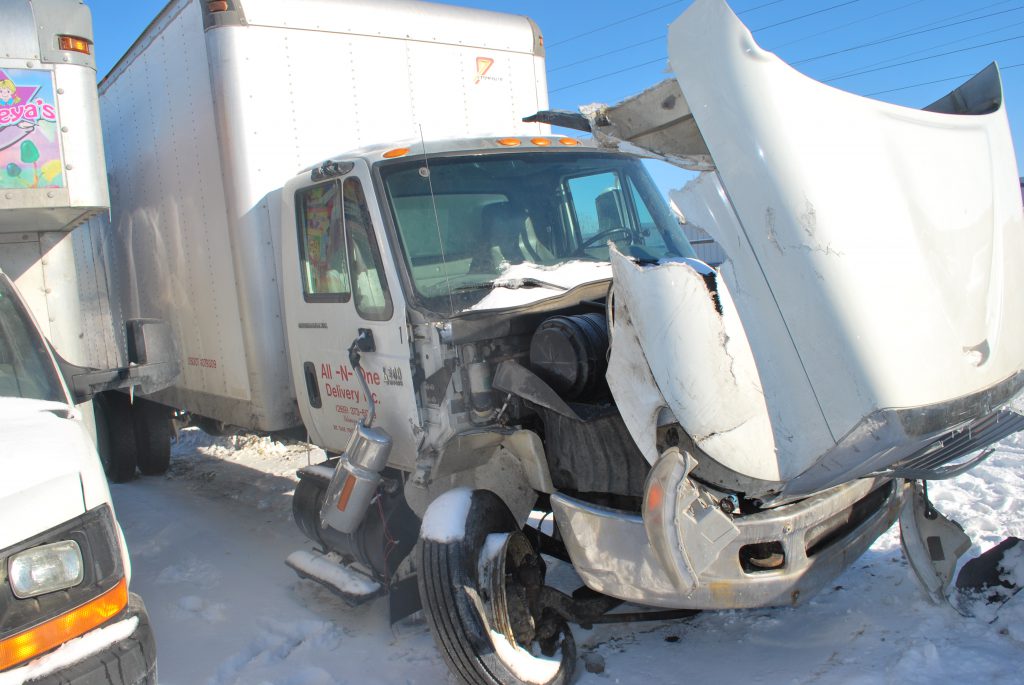Truck Accident Investigation and Reconstruction
Miller Engineering has investigated or assisted in litigation for hundreds of commercial truck accidents, including:
- vehicles stopped on roads or making questionable maneuvers in front of trucks;
- mechanical failures of defective components such as tires, brakes, etc.;
- trucks stopped at night without any tail or running lights;
- trucks colliding with pedestrians;
- snow plows and construction equipment colliding with autos; and
- autos rear-ending tractor trailers.
The following sections describe some of the most common factors that are involved in our assessments. A link to view some example projects is also provided below.
Truck Crashes With Autos
Many commercial truck accidents involve collisions with autos. Commercial truck operators often have litigation brought against them or their company for such accidents. The causes of such crashes may relate to inattentativeness or poor judgement on the part of the truck driver, or actions by the auto drivers which put the truck drivers in a situation where a collision cannot be avoided.
Visibility From Truck Cabs
While forward vision is excellent from a truck driver’s elevated position, vision to the sides and rear has some limitations. Miller Engineering has developed techniques to quantitatively analyze and graphically depict visibility areas and blind spots as a function of driver’s size, mirror configuration and type of vehicle involved.
TV Monitor Usage
Driver visibility enhancement has increased considerably as technology has allowed. TV cameras are installed and pointed rearward in vehicles with limited rear visibility for reverse maneuvers. Garbage trucks, school buses, and airport car rental shuttle vans are example applications. Miller Engineering has identified that the selection of proper camera lens, location of mounting on the rear of the vehicle, location and size of driver’s monitor, and anticipated angular size of potential pedestrian targets are all critical to the selection and installation of these systems and will determine the probablility that a driver will indeed detect a potential rear hazard target.
Lug Nut Torque Requirements
Proper Torque is critical to keeping tires firmly attached to the vehicle. Miller Engineering has worked on numerous cases involving lug nut failures for both autos, trucks, RVs, and towed vehicles. Proper torque placed on any vehicle’s lug nuts is imperative in preventing accidents. Both too low a torque and too high a torque will lead to catastrophic accidents. Additionally, lug nuts on high-mileage vehicles may fall prey to metal fatigue, which can affect their structural integrity. The most common and highly dangerous lug nut failure occurs when one of the dual tires on a truck becomes detached from the vehicle at a high speed and rolls towards other vehicles or pedestrians. Safe maintenance techniques have been developed to reduce the chance of this occurring. Use of specialized tools, such as torque sticks, can assure proper lug nut torqueing, provided they are used in accordance with manufacturer’s instructions and replaced when normal operation becomes difficult. Regular checking of lug nuts using a manual torque wrench is important for maintaining safety.
Tanker Truck Accidents
The most commonly reported incidents involving these vehicles are collisions resulting in spills and explosions. Less common are incidents involving driver and property damage from off-load liquid pump malfunction or improper use, slips and falls while maneuvering around bottom loaders and ladders, exposure to leaked contents around loading areas. Miller Engineering has experience in warning analysis/design and accident reconstruction in all of types of incidents.
